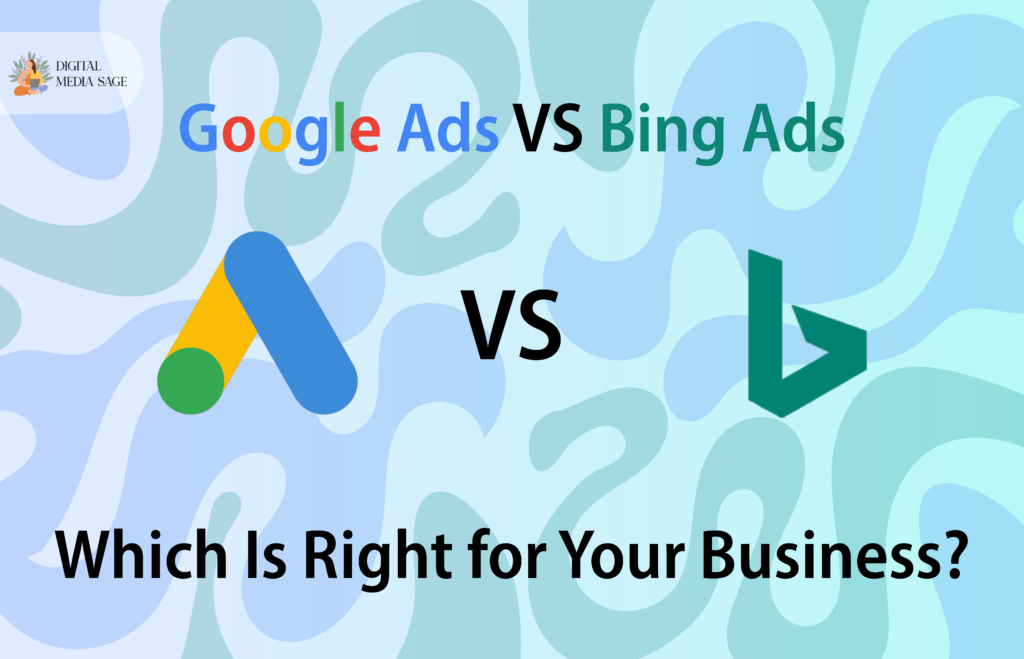Hey there! If you’re a business owner like me, trying to attract more customers online, you’ve probably come across the big question: Google Ads or Bing Ads? Both platforms are fantastic for running online ads, but deciding which one is better for your business can feel like a puzzle. Don’t worry, though—I’ve got you covered! Let’s break this down together and figure out which platform makes the most sense for you in 2025.
What Are Google Ads and Bing Ads?
Before we dive into the nitty-gritty, let me quickly explain what these platforms are. Both Google Ads and Bing Ads let us show ads to people searching for specific keywords online. These ads can pop up on search engines, websites, or even apps.
Here’s a quick rundown:
- Google Ads: Ads that appear on Google Search, YouTube, and the Google Display Network.
- Bing Ads (now Microsoft Advertising): Ads that show up on Bing, Yahoo, and AOL.
Now that we know the basics, let’s see how these two stack up against each other.
Google Ads: The Giant in the Room
Reach and Audience
When it comes to reach, Google is the undisputed champ. With over 90% of the global search engine market share, your ads can reach billions (yes, billions!) of people. Whether it’s on Google Search, YouTube, or partner sites, Google Ads ensures your message gets out there.
If you’re aiming to connect with a massive audience, Google Ads is the clear winner.
Pricing and Cost
Let’s talk about the money side of things. Advertising on Google can get pricey, especially in competitive industries like finance or law. The cost-per-click (CPC) can range anywhere from ₹10 to ₹200 (or more). That said, Google Ads offers flexibility, so whether you’re a small startup or a large corporation, you can find a budget that works for you.
Targeting Options
This is where Google really shines. It gives you so many ways to pinpoint your audience:
- Target by location, language, or device.
- Filter by demographics like age or income.
- Use remarketing to re-engage visitors who’ve already checked out your website.
If your goal is to scale quickly and reach as many people as possible, Google Ads is a fantastic choice.
Bing Ads: The Underdog with Surprising Strengths
Reach and Audience
Okay, so Bing might not have Google’s scale, but don’t underestimate it! Bing Ads (or Microsoft Advertising) has a unique audience, especially among professionals and users of Microsoft products like Edge and Windows. Plus, there’s less competition, so your ads might stand out more.
Pricing and Cost
Here’s where Bing Ads gets a leg up. It’s often more affordable than Google Ads, with CPCs ranging from ₹5 to ₹100. This lower cost can be a game-changer if you’re working with a tight budget.
Targeting Options
Bing Ads offers some cool features you won’t find on Google, like LinkedIn profile targeting. This lets you reach people based on their job titles or industries—perfect for B2B campaigns. And of course, you still get the basics like geographic and demographic targeting.
If you’re looking to keep costs low while reaching a specific audience, Bing Ads might be the way to go.
Pros and Cons: A Quick Look
Here’s a quick side-by-side comparison to make things easier:
| Platform | Pros | Cons |
| Google Ads | – Massive audience reach | – Higher costs |
| – Variety of ad formats (text, video, shopping, etc.) | – Tough competition | |
| – Advanced analytics and targeting | – Stricter ad approval policies | |
| Bing Ads | – Lower costs and less competition | – Smaller audience |
| – Unique LinkedIn targeting | – Fewer ad placement options | |
| – Often lower cost-per-conversion | – Simpler reporting tools |
So, Which One Should You Choose?
If you’re asking me, it really depends on your business needs and budget. Here’s a simple way to decide:
- Go for Google Ads if you want to reach the largest possible audience and have the budget to spend more.
- Go for Bing Ads if you’re working with a smaller budget or targeting professionals and niche markets.
But you know what? Why not try both? You could allocate most of your budget (say, 70-80%) to Google Ads for its reach, and the rest to Bing Ads to tap into cost-effective opportunities. This way, you get the best of both worlds!
Best Practices to Keep in Mind
No matter which platform you go with, here are some tips that have worked wonders for me:
- Set clear goals: Decide whether you want more website traffic, leads, or sales.
- Do your keyword research: Tools like Google Keyword Planner or Bing Keyword Planner are your best friends.
- Write compelling ads: Keep them simple, engaging, and unique.
- Optimize your landing pages: Fast, mobile-friendly pages convert better.
- Monitor your campaigns: Check in regularly and tweak things as needed.
- Experiment: Test different ad formats and targeting options to find what works best.
Final Thoughts: My Recommendation
If you’re asking me, both platforms have their strengths, and combining them is often the smartest move. Start small, track your results, and scale up once you see what’s working.
Online advertising isn’t a sprint—it’s a marathon. Be patient, stay curious, and keep refining your strategy. You’ve got this!
Happy advertising, and here’s to your business thriving in 2025! 🚀


